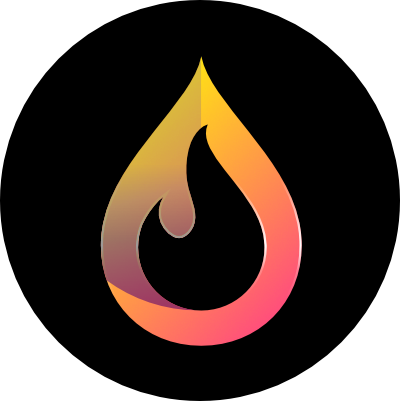Woodburning Stove Tools To Ease Your Daily Lifethe One Woodburning Sto…
페이지 정보

본문
 How to Properly Operate a Woodburning Stove
How to Properly Operate a Woodburning StoveWood stoves can be an inexpensive and cozy way to heat your home. However, the smoke they produce can also be harmful to health. It is important to know how these appliances work and how to use them properly.
Modern stoves utilize secondary or catalytic combustion to limit emissions. However, older stoves and open fires generate large amounts of particulates.
The firebox
The firebox is the heart of any fireplace system. It's where you create a fire to heat your home and provide ambiance. It's a simple concept, but there are many important details that must be accounted for to keep your wood burning stove safe and efficient.
The firebox can be described as a combustion chamber that has walls and lid. The majority of fireplaces come with an already-built metal or masonry fireboxes. The type of box you choose depends on your preferences and the type of fireplace you own.
The majority of wood-burning stoves utilize a constant flow of air to generate the fire and burn the fuel. Fresh air is introduced into the stove through dampers that can be adjusted inside its doors. This allows the fuels to be burned correctly, and also reduces the toxic gases produced by burning that is not complete or properly burned. The exhaust gases will be dragged up the chimney, and then away from your home.
Modern stoves with catalytic secondary combustion use a special catalyst that allows unburned gases to be reburned to produce additional warmth. This produces a cleaner and less polluting smoke than traditional wood stoves without secondary combustion. Modern non-catalytic stoves are available, but they're typically less efficient than stoves that have catalytic secondary combustion.
Some wood-burning fireplaces wood burning stoves come with backboilers that can be used for space heating as well as water heating. These are referred to as "combination" or "hybrid" stoves and have been around since the beginning of the 20th century.
Wood burning stoves should be used with seasoned wood. Freshly cut wood (green) has high levels of water. This can result in low flue temperatures, as well as an excessive accumulation of creosote in the chimney. This could lead to chimney fires that cause damage to the stove and can even be dangerous to your family's health.
If you're looking for an expert to look over your wood-burning stove, or perform any firebox repairs, make sure the chimney expert you hire is CSIA certified and has customer testimonials on their website. You can inquire about their prices and the kind of work they do.
The ventilation pipe
Ventilation is essential for wood stoves to help remove smoke and keep the home safe and warm. Ventilation helps remove carbon monoxide, nitrogen dioxide, and excess moisture from the process of combustion. It also helps reduce the amount of air pollution and heat loss to the outdoor. Gas, wood and pellet stoves all have distinct requirements for venting. It is important to maintain the stove's venting system on every year to ensure safety and efficiency.
The ventilation system is made up of the firebox as well as the ventilation pipe. The chimney and the vent pipe work together to create draft, bringing smoke from the stove through the fireplace to the outside air. The differences in densities and temperature between the hot wood smoke and cold outside air creates draft. The more hot the smoke, the more it can rise through the chimney and through the ventilation pipe.
Modern wood stoves are EPA-certified low-emission units. This means that they produce significantly less pollution than older models, and contribute to global warming as well as other environmental issues. Many newer stoves include pollution controls that reduce the amount of carbon dioxide they emit, while also ensuring that the emissions are disposed of efficiently.
Older stoves that have open flues generate more carbon dioxide. This is a poisonous gas that is toxic and should not be released into your home. Carbon monoxide can be produced when the chimney is dirty or there is inadequate ventilation. Installing carbon monoxide alarms in your house is therefore important.
Measure the distance between the chimney's opening in the ceiling or wall and the place where the wood stove is on the floor. Multiply this number by two to determine the length of stovepipe you require. Single-wall or double-wall stovepipes and ensure that you have adequate clearance from combustibles for either type.
The air vent of the stove must be adjusted when it first gets lit and maintained until a stable flame is created in the stove and its combustion process has stabilized. It is recommended to avoid using wood based logs in the stove as they may contain volatile chemicals which can cause the air vents to fail.
The chimney
 The chimney is a complicated system which requires attention and care. The chimney is composed of many important components that are essential for the safety and efficiency of your stove.
The chimney is a complicated system which requires attention and care. The chimney is composed of many important components that are essential for the safety and efficiency of your stove.The wood-burning stove's combustion gases are emitted to the outside by the firebox, the vent pipe and the chimney. This is essential to lower carbon dioxide levels and to prevent harmful emissions. To achieve this, the chimney and flue have to be hot enough to carry the gases out of the fireplace without them cooling. This is achieved by using a woodburning stove that has high heat output and by frequently adding new logs to the fire.
Most modern woodburning stoves are designed to operate with a chimney that's taller than older models in order to create a more draft effect. However, this may be a disadvantage in the event that the height of your chimney exceeds the maximum allowed for your particular location. In this scenario the chimney could be competing with the house's stack for airflow, causing the gases to cool down before leaving. This can impede the gas flow and cause creosote buildup which could pose a fire hazard.
One of the most frequent errors that homeowners make is to open and close the fireplace door too often which can adversely affect combustion. It is crucial to keep the door of your fireplace as tightly shut as you can, and only open it when you need to add firewood or ash. The door that is left open for too long allows the hot air to escape from the stove, causing the logs to get cooler and more difficult to light. It also releases unburned volatile compounds into the room.
Other types of combustibles can produce higher emissions or a chimney fire. The fact is that woodburning stoves are designed and optimised to burn firewood, not other types of combustibles.
The flu
A woodburning Stove - http://Netvoyne.ru/user/dimplefile6/ - needs a correctly size flue to permit adequate draft and air flow. Typically, the size of the flue has to be at least 25 percent larger than the stove pipe (which connects the stove to the chimney) to provide enough space for smoke circulation. A wood stove should be placed on a non-combustible hearth with a clear space in front of the fireplace opening.
Modern stoves have an element called catalytic combustor which can help reduce the amount of harmful by-products that are released into the chimney. This feature can also help to increase the efficiency of a wood stove by burning a fire that produces more heat and less pollution. However, using other kinds of combustibles like coal, can lead to problems, including lower efficiency and higher emissions.
When you are burning wood in a stove or fireplace, it is important to use dried or seasoned wood. If your wood is not dry or seasoned, it will emit high levels of creosote and water vapor into the chimney. This could result in low flue temperatures and even a fire in the chimney.
A professional can also help you avoid the possibility of a chimney fire by regularly checking and cleaning the flue system. This should include the chimney, stovepipe and chimney itself to ensure that they are all in good condition.
A soiled stove or flue system may lead to an unclean draft in your chimney, which could cause carbon monoxide build-up in your home. This can be harmful to your family members and should never be allowed to happen.
A good rule of thumb is to have a professional chimney sweep clean your chimney and woodburning stove stove each year. This will help keep your chimney and Woodburning Stove stove working efficiently.
- 이전글Ten Stereotypes About Lost Auto Key Replacement That Aren't Always True 24.04.30
- 다음글The Best Tips You'll Ever Get About Wood Burner Fireplace 24.04.30
댓글목록
등록된 댓글이 없습니다.
